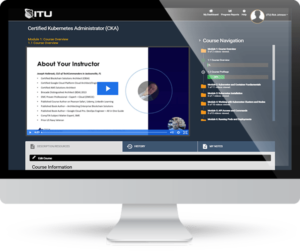“ITU has been our choice employee it training solution for over four years. We researched over 10 different vendors prior to selecting them and have renewed our contract with them during that same timeframe. Their courses are high quality, current, relevant, and taught by experienced and engaging instructors. Further, their customer service is responsive and knowledgeable. They are a trusted business partner for our employee it training and have a high degree of integrity. It would be a mistake not to explore what ITU can do for you."
- A.I
ITU Online's courses have tremendous value to our training program. Our training offerings are a major aspect of our ability to hire employees, and ITU Online makes it easy and convenient for our employees to grow their skillset. While we focus on mainly IT (Desktop support, IT Service provisioning, and IT Engineering Services), and Cyber Security (Security +, CISSP, etc), ITU Online provides a wide variety of training courses. Our employees enjoy the training, and our budget personnel appreciate the price. ITU Online is a vital aspect of our training program."
- K.S






